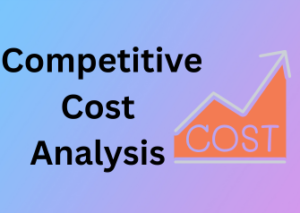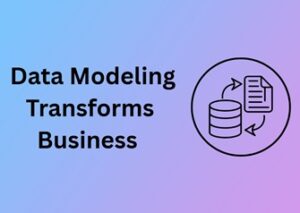Hello there! Today, let’s dive into an essential topic that plays an often underappreciated role in financial stability and planning—insurance. Specifically, we’ll discuss modern insurance demands and what drives them in today’s rapidly changing landscape. Ready? Let’s explore together!
Modern customers are no longer satisfied with generic offers when it comes to insurance. They’re expecting customization, transparency, and instant services. Look around—you can see how life has become more tailored, from Netflix recommending what to binge-watch next to your grocery delivery app knowing your favorite snacks! Insurance, believe it or not, is on the same trend. Customers increasingly want their policies to reflect their unique lifestyles and needs.
Why the Shift in Insurance Demands?
Let’s break it down into a few key factors:
- Increased Awareness: With easy access to information online, people are learning more about the importance of insurance as part of financial wellness. They’re actively researching options and demanding solutions that truly protect their assets and loved ones.
- Changing Lifestyles: From remote work and freelance gigs to electric vehicles and frequent relocations, lifestyle changes bring new risks. These shifts create the need for dynamic and flexible coverage rather than one-size-fits-all policies.
- Global Events: Events like the COVID-19 pandemic have highlighted vulnerabilities in traditional insurance models, leading to increased demand for health and income-protection insurance. People now see insurance as not just a “nice-to-have” but a necessity.
What Insurers Need to Do to Stay Relevant
Insurance providers, pay attention! Meeting evolving customer demands means stepping up with some exciting changes. Here’s how you can embrace this evolution:
- Focus on Personalization: Customers want coverage that feels tailor-made for them. For instance, younger drivers prefer pay-as-you-drive car insurance, while remote workers might seek home insurance that protects both personal and business use of their home space. By offering flexible options, companies can stand out in this competitive market.
- Be Transparent: Let’s face it—insurance jargon can be confusing. Customers value clarity about policy terms, exclusions, and pricing structures. Simplifying the process builds trust and encourages long-term loyalty.
- Offer Digital Convenience: In today’s fast-paced world, customers expect seamless digital experiences. From getting quotes online to filing claims through mobile apps, tech-savvy solutions are no longer optional—they’re essential.
Emerging Trends Shaping the Future of Insurance Globally
Hello, there! If there’s one thing that’s certain about the world of insurance, it’s that change is constant. Over the past few decades, this industry has evolved at a breakneck pace to keep up with shifting societal needs, technological advancements, and global economic transformations. Let’s dive into the top emerging trends shaping insurance globally to give you a sense of what lies ahead.
1. Climate-Driven Policies: A New Priority
With climate change becoming an undeniable global challenge, insurers are rethinking their traditional risk models. From hurricanes to wildfires, unpredictable weather events are impacting lives and infrastructure more than ever. As a result, many companies are introducing innovative climate-related policies. Expect to see more parametric insurance, where payouts are triggered automatically when specific conditions, like a hurricane of a certain magnitude, occur. This is changing the game by offering faster payouts and reducing red tape during crises.
2. Rise of Personalized Insurance
Gone are the days of one-size-fits-all coverage. People now want products tailored to their unique lifestyles and preferences. Thanks to advancements in data collection and analysis, insurance providers can offer highly personalized services. For instance, usage-based auto insurance allows you to pay premiums based on how safely and frequently you drive, tracked via telematics devices or mobile apps.
Consumers appreciate flexibility, and this trend extends into health, home, and even pet insurance. The more tailored the policy, the happier the customer. Ain’t that a win-win?
3. Increased Emphasis on Digital-Only Models
Let’s admit it, we live in a convenience-loving, app-heavy world. The insurance sector has taken notice, which is why insurtech companies—tech-driven startups providing digital insurance solutions—are booming. These platforms streamline the customer experience, enabling policies to be purchased, managed, and even claimed entirely online.
Imagine skipping the paperwork and awkward phone calls, replacing them with easy app navigation. Global players are either partnering with insurtech firms or creating in-house digital ecosystems. Pretty cool, right?

4. A Global Push for Inclusive Insurance
Insurance has historically been inaccessible for billions of people in emerging markets. However, this is starting to shift. Rapid advancements in mobile technology and fintech solutions are enabling affordable insurance policies tailored to low-income populations. Products like microinsurance—short-term, low-cost policies—are flourishing in countries where traditional insurance never reached. For the first time, financial protection is truly becoming a reality for all.
5. Mental Health Coverage Gains Traction
Here’s one of the more positive shifts: mental health is taking its rightful place in conversations about comprehensive wellness. More insurers are now including mental health services, therapy sessions, and even access to wellness apps as part of their plans. This reflects a broader cultural shift towards recognizing the significance of mental health in achieving overall well-being.
6. Sustainability in Risk Management
In a world increasingly focused on environmental, social, and governance (ESG) criteria, insurers are stepping up their game by actively promoting sustainability. Pioneering firms are investing in green technologies, like electric vehicle insurance packages, and incentivizing eco-friendly behavior among policyholders. With corporations and governments holding themselves accountable, sustainability initiatives will help shape risk profiles moving forward.
Regional Analysis: Patterns and Preferences in Market Segments
Insurance isn’t a one-size-fits-all solution—far from it! Different regions have distinct needs, preferences, and trends that shape the way insurance services are designed, marketed, and consumed. Understanding these regional variances is crucial for insurers looking to meet consumer expectations and gain a competitive edge. Let’s take a closer look at how geography influences insurance patterns and what this means for industry stakeholders.
Why Regional Analysis Matters
When it comes to insurance, context is everything. Economic conditions, cultural norms, regulatory frameworks, and even natural environmental risks can all significantly impact what people prioritize in an insurance policy. For instance:
- In areas prone to natural disasters, such as hurricanes or earthquakes, there’s typically a higher demand for property and disaster insurance.
- Regions with aging populations, such as parts of Europe and Japan, see greater interest in life insurance and health plans tailored specifically for senior citizens.
- In emerging markets, like certain countries in Asia and Africa, microinsurance geared toward lower-income groups is becoming a significant growth area.
By tailoring products to these regional nuances, insurers can ensure both relevance and customer satisfaction.

Dissecting Regional Insurance Trends
So, what’s happening across the globe in the insurance space? Kicking things off with some broad trends, here’s a snapshot of how different regions are responding to the evolving landscape:
- North America: North Americans are highly attuned to insuring everything—literally everything! Homeowners’ insurance and automobile insurance remain staples, but there’s increased demand for cyber insurance amidst rising digital threats. Employer-sponsored health insurance continues to dominate, though there’s a growing interest in flexible, personalized health coverage options.
- Europe: The European insurance market thrives on its deep regulatory roots. With an emphasis on sustainability, insurers are increasingly offering green insurance policies. Additionally, parametric insurance is picking up steam as a futuristic approach to quick and transparent claims processing, particularly for weather-related incidents.
- Asia-Pacific: The APAC region is a vibrant mix of established and emerging markets. Countries like China and India are driving growth through tech-enabled products, especially in health insurance. Meanwhile, Japan’s aging demographic is a key driver for tepid but steady growth in the life insurance segments.
- Africa: Insurance penetration here is low compared to other regions, but don’t let that fool you—there’s enormous potential. Products like mobile-based microinsurance, which allow people to secure life or health cover for as little as a dollar a month, are catalysts for regional growth. Agriculture insurance is also in high demand, thanks to climate variability.
- Latin America: The Latin American market is heavily shaped by socio-economic factors. Economic instability in parts of the region can limit access to traditional insurance policies, making pay-as-you-go insurance products particularly appealing. Car insurance remains a stable mainstay, particularly in urban centers.
Meeting Regional Preferences: Tips for Insurers
For insurers looking to win over regional markets, focusing on adaptation and innovation is the way to go. Here are a few tips:
- Data-driven insights: Leverage local market data to understand consumer behavior. Is there a greater need for affordable health coverage? Or is it more about niche products like pet insurance?
- Build trust: This is especially important in regions with low insurance penetration. Educate consumers about the benefits of coverage and create straightforward policies without confusing jargon.
- Go digital: In regions with high smartphone penetration, prioritize mobile-friendly solutions. A simple app can serve as a powerful platform for engagement and convenience.
Technology’s Role in Transforming Insurance Services
Let’s be real, the world of insurance isn’t always the most exciting topic, but introduce technology into the mix, and suddenly things get a whole lot more interesting. The insurance industry is undergoing a digital renaissance, leveraging cutting-edge tech to reshape how it operates, how it connects with customers, and how it delivers services. Here’s why it matters and how it’s making your insurance experience smarter, smoother, and more personalized than ever before.
1. The Power of Automation
Say goodbye to mountains of paperwork and hours spent filling out forms! Automation is fast becoming the backbone of modern insurance operations. Insurers are using artificial intelligence (AI) and machine learning to handle repetitive tasks like claims processing, underwriting, and policy renewals. This not only speeds up processes but greatly reduces errors. For instance, advanced algorithms can now evaluate vast amounts of data to assess risks or approve claims in minutes rather than weeks.
Why it’s awesome for you: Faster claims resolution means getting payouts quicker during critical times, saving you tons of stress.
2. Personalized Policies Through Big Data
Technology has given insurance companies a treasure trove of information about customers, thanks to big data. From analyzing driving habits to monitoring health stats via wearable devices, insurers can now create personalized policies tailored specifically to you.
- For car insurance, telematics devices in vehicles record real-time driving behavior—rewarding safer drivers with lower premiums.
- For health insurance, wearable fitness trackers monitor physical activity, offering incentives like discounts for meeting wellness goals.
This personalization helps insurers align coverage with individual lifestyles, ensuring fairer pricing structures.
3. Instant Gratification Meets Insurance
Let’s face it: we’re all about instant gratification these days, and technology is helping insurance companies meet that expectation. Through mobile apps, chatbots, and self-service platforms, you can now purchase policies, submit claims, and even ask for support—all at the tap of a smartphone screen. The rise of insurtech startups is also making traditional insurers up their game in delivering seamless, easy-to-navigate digital experiences.
One standout trend? Using artificial intelligence-powered chatbots, customers can get answers to their questions 24/7 without waiting for a human agent.
4. The Blockchain Revolution
Yes, blockchain isn’t just for cryptocurrency; it’s making waves in insurance too! With its ability to create secure, transparent, and tamper-proof records, blockchain is transforming processes like fraud detection and claims verification. For example, a blockchain-based contract automatically tracks and validates the conditions of a policy, reducing disputes and making it easier to enforce agreements.
Blockchain could also enable usage-based insurance, where you pay for only what you need, such as temporary car insurance or on-the-go travel coverage. How cool is that?
5. Predictive Analytics: A Game-Changer
While predictive analytics deserves its own spotlight (and, technically, it falls under Heading VI), it’s worth mentioning briefly here. Advanced data analytics is enabling insurers to stay proactive, identifying potential risks before they happen. For you, this proactive care could mean discounts for actions that might reduce your risk, like installing smart home devices that lower the likelihood of theft or damage.
Consumer Behavior and Decision-Making in Insurance Purchasing
Ever wondered what really drives people when they’re choosing an insurance plan? Consumer behavior in the insurance world is fascinatingly complex, shaped by various factors ranging from emotions to financial planning. Let’s dive into this topic and make sense of how individuals make these critical decisions!
Understanding the “Why”: What Motivates Insurance Purchases?
Insurance is rarely a spur-of-the-moment purchase. Consumers usually buy insurance when specific motivations arise, including:
- Life Transitions: Milestones like getting married, having children, or buying a home often prompt people to consider insurance policies. These moments signify new responsibilities, encouraging careful planning for the future.
- Financial Security: At its core, insurance offers peace of mind. People want assurance that they and their loved ones will be financially protected in case of unexpected events.
- Regulations and Requirements: Sometimes, purchasing insurance isn’t just a choice—it’s mandatory. For instance, auto or home insurance may be legally required or tied to borrowing conditions like loans or mortgages.
Factors Influencing Insurance Decisions
While the motivations are clear, the actual decision-making process is shaped by a mix of logical and emotional triggers. Here’s what plays into the mix:
- Perceived Value: Consumers often weigh the cost of premiums against the potential benefits. The more tangible and relatable the benefits (like covering medical bills, replacing a car, or securing retirement income), the easier it is for consumers to justify the purchase.
- Brand Trust: Trust plays a major role in narrowing options. People tend to gravitate toward insurance providers with a strong reputation and proven track record of fairness, excellent customer service, and financial stability.
- Ease of Understanding: Insurance jargon can be overwhelming! Policies that are transparent, easy to understand, and clearly communicated are far more likely to resonate with buyers.
- Recommendations and Reviews: Personal recommendations from friends, families, or financial advisors, and online reviews, can heavily influence decisions. A bad experience shared online can discourage potential buyers, while positive feedback can create stronger interest.
The Shift: How Modern Consumers Are Shopping
The digital age has brought seismic changes to how people purchase insurance.
- Online Research: Today’s buyers are far savvier, with many doing extensive online research before committing to a provider. They compare policy features, pricing, and even customer reviews within minutes, leaving little room for error for insurers.
- Personalization: Consumers are increasingly looking for insurance products tailored to their unique needs rather than one-size-fits-all policies.
- Instant Gratification: The days of lengthy paperwork are disappearing. Instant quotes, online sign-ups, and efficient claim processing are becoming baseline expectations
Predictive Analysis: Anticipating Market Shifts and Dynamics
Let’s face it: predicting the future feels like wizardry to most of us. But when it comes to modern insurance markets, predictive analysis is no longer some mystical art—it’s a cutting-edge science that can change the game entirely. So, how does it work? And why is it critical for the insurance industry? Grab a cup of coffee and let’s dive in!
What is Predictive Analysis in Insurance?
Simply put, predictive analysis is using data, statistical algorithms, and machine learning techniques to identify patterns and anticipate future outcomes. Sounds fancy, right? But think about it: the insurance world has always been about mitigating risks. Now, with predictive tools, insurers can forecast everything from customer behaviors to market trends with much more accuracy. It’s like having a crystal ball—except this one runs on data!
Why Does It Matter?
Here’s the deal: customer expectations are evolving, markets are becoming more volatile, and competition is fiercer than ever. For insurers, staying ahead means being proactive rather than reactive. Predictive analysis paves the way for smarter business strategies. Here are a few critical benefits:
- Enhanced Risk Assessment: Gone are the days of relying on generic assumptions about who might claim what. With predictive models, insurers can develop profiles specific to individuals or businesses, assessing risks with unprecedented precision.
- Fraud Detection: Fraud is a serious headache for insurers, costing billions annually. Predictive tools analyze anomalies in claims and flag suspicious activities before they cause financial damage.
- Optimized Customer Experience: Predicting customer needs means tailoring services to meet them. For instance, offering timely reminders for policy renewals or suggesting add-on covers based on life events can strengthen client trust.
The Role of Data: The Backbone of Predictions
All this magic wouldn’t work without one crucial element: data. From social media activity and purchase behaviors to demographic details, insurers pull from diverse sources to fuel their predictive engines. But here’s a challenge—this bounty of data also comes with concerns around privacy and security. Insurers must strike a balance between collecting actionable insights and respecting their customers’ privacy. Transparency and ethical practices will always win trust in the long run.
Strategies to Harness Predictive Analysis
Are you wondering, “How do insurers get started with predictive analysis?” Great question! Building a successful predictive system doesn’t happen overnight. Here are some must-know strategies:
- Invest in Technology: Advanced software and AI tools are non-negotiable. Implementing platforms that allow real-time processing of massive datasets is game-changing.
- Upskill Teams: The tech may be smart, but a well-trained team can truly unleash its potential. That means hiring analysts, data scientists, and AI experts to lead the charge on insights.
- Collaborate Across Sectors: Partnering with tech companies, actuaries, and compliance teams can ensure predictive models are both impactful and regulatory-compliant.
Challenges and Opportunities in a Competitive Insurance Landscape
Let’s face it — the insurance industry isn’t what it once was. It’s moving at lightning speed, with new challenges emerging daily and countless opportunities waiting to be seized. For industry players, staying ahead in this fiercely competitive environment requires dexterity, innovation, and a solid grasp of the landscape they’re navigating. Let’s dive into the most pressing challenges insurers are tackling today, and explore how these same hurdles open doors to thrilling opportunities.
The Challenges Keeping Insurers on Their Toes
Every insurer, from startups to global giants, faces specific obstacles in today’s market. These include:
- Regulatory Overload: Compliance is a big deal in insurance. With rapidly changing regulations across regions, insurers must thread the needle to stay compliant without stifling innovation. It’s a tricky balancing act — miss the mark, and the financial repercussions can be severe.
- Customer Expectations: Consumers today want more than coverage; they want experiences tailored to their needs. Meeting demands for personalized policies, seamless onboarding, and prompt claims processing can feel like a never-ending race.
- Technological Pressure: Sure, tech is exciting, but it’s also intimidating. Insurers are under pressure to adopt advanced technologies like artificial intelligence and blockchain. Falling behind can leave companies struggling to compete.
- Climate and Environmental Risks: The rise in natural disasters and changing environmental conditions has led to increased claims and greater financial risk. Insurers are in a constant battle to predict, prepare for, and mitigate these events.
- Competition from New Players: Fintech startups and digital-first insurers are entering the market with speed, agility, and simplicity. Legacy insurers must rethink their strategies to stay relevant in this crowded arena.
Sound overwhelming? It can be! But here’s the good news: every obstacle also signals a potential to innovate. That segues perfectly into the other side of this coin — opportunity.
Turning Challenges Into Exciting Opportunities
Where there’s disruption, there’s room for growth. Let’s explore how today’s challenges pave the way for smarter, more sustainable insurance practices:
- Streamlined Compliance: Adopting RegTech (regulatory technology) solutions enables insurers to pull ahead on compliance issues. These tools make it easier to monitor and respond to regional regulations in real time, reducing stress and risk.
- Customer-Centric Innovations: By leveraging Big Data and analytics, insurers can create hyper-personalized coverage options that speak directly to customer needs. Think customized policy packages or pay-as-you-go insurance plans.
- The Tech Advantage: Embracing technologies like AI and machine learning allows companies to optimize underwriting and claims processes. This not only reduces costs but also enhances the customer experience. Blockchain, for instance, can improve transparency and security during claims settlement.
- Sustainability as a Selling Point: Insurers focusing on environmentally conscious initiatives can meet investor and customer expectations in this age of ESG (Environmental, Social, and Governance). Green insurance products and policies focused on renewable energy partnerships are trending upward.
- Collaboration Over Competition: Partnering with tech startups or InsurTech companies isn’t a sign of weakness — it’s a strategy for staying ahead. By combining the resources of traditional insurers with the nimbleness of startups, both can co-create innovative solutions for the market.











